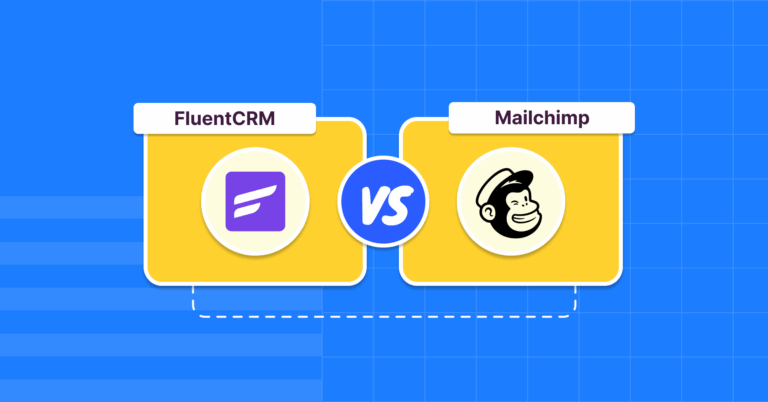
10 Reasons Behind Low-converting Forms and How to Improve Them
Share :

We will never spam you. We will only send you product updates and tips.
The possibilities of conversion are endless with online forms. If you can take care of it right, you can gain what you expect. Many webmasters feel pain with the bad experience of their low-converting forms.
This article will try to discuss the reasons behind the low-conversion of a contact form as well as it will suggest how to improve the forms. One thing nobody can ignore is the significance of a contact form in business.
Since the form has a direct, positive impact on business and it has the capacity to reduce the earnings. Even if you don’t have the idea what’s wrong with your form although you have taken care of everything – read the post from top to bottom.
Pro tip: A proven way to gain more form conversion is using Fluent Conversational Forms. It’s a Typeform-style, interactive form creation process within WordPress. Make sure to check that out.
Why you need forms
While your business is online, you need more interaction with users. To get a basic understanding of the customer’s experience, the most reliable way you can trust on is forms. By the way, online forms come into multiple shapes: contact forms, support form, survey forms, and more.

By using forms in your website, you can conduct an easy analysis on users psychology, grow email leads, sell new products, increase conversion, and give an opportunity to users to contact you. However, a website without forms is not a complete site.
Besides that, for ensuring a better user-experience, contact forms are an essential part of any website. Users may need to contact with the webmaster for support regarding services. A contact form made this thing easy and comfortable. Because you keep a dedicated team for support, all submitted queries can be resolved fast.
The importance of tracking conversion

When customers are filling out a form, it means they’re joining you to make your journey more prolific. To identify the next step, you need to know how the current forms are performing.
In addition, you first need the data to understand your visitors’ persona. The conversion rate will tell you how popular a form is. From there, you can easily figure out the next move.
Webmasters trust Google Analytics to understand their customer’s behavior and all other relevant data. Unfortunately, it’s not possible to find out the form conversion in Google Analytics.

Online tools and plugins are available to keep track of the forms. And, who doesn’t want to increase conversion with forms? Alongside monitoring the whole website, taking care of the form is also important.
Reasons for low conversion
You don’t want to feel the pain of not converting the forms at your expectation. Before improving the forms, you need to know first, why the forms don’t work correctly. Below are some points explained to you so that you can save your form from low-conversion.
Excessive Form Fields

Several studies found that reducing form fields boost conversion. Simultaneously, too many form fields can be one of the biggest mistakes while you can optimize it and earn a better result.
People don’t have abundant time to spend on filling out a form. In that sense, the more fields mean a lot of work while it won’t take too much time with fewer form fields.
Required fields are too many
Well, it’s legit to keep as many required fields as you want. But, you can feel the bitterness by putting yourself in the shoes of your users. Not only it shows a lot of work, but it seems kind of offensive since users need to input some of their private information by force.

Keeping only the crucial fields as mandatory can reduce the form abandonment. If it’s enough to add name and email in the mandatory blocks, then avoid adding more.
No tooltips or help text

Users need to know why some forms are required or why a private data is being collected. Showing no tooltips or help text can put your users in the dark which, in a result, causes form abandonment.
Tell what should be told. Be aboveboard so that users don’t get perplexed by seeing no guideline there. Tooltips and help texts both are useful to enlighten the visitors to make them understand something.
No autofill for old users
Along with your new users, you should also take care of your old users. If your forms are smart enough, then it will automatically show data to recurring visitors when they landed to your site again.

This way, users will get a personalized experience if they ever visited you first. On the other hand, repetitive form filling may bring a feeling of disgust if every single time one will have to fill it out.
You’re not giving attention to your submit button

The submit button is the most significant part of a form where the actual action happens. It should represent your company’s expectation and intention.
As an example, you can use longer text like “get the offer” or “click to access” instead of “submit” and download. But, you see a three-word phrase makes much clearer sense than the single word.
The suggestion came out from several experiments that it’s better to keep the text first-person. When people see something like “Yes, I’m in!” or “Give me free credits” they already feel like they own it.
Not using CAPTCHA smartly

Fighting spam is a common issue for every webmaster and form isn’t out of the list. Keeping the form safe from the spamming attack, you’ll find several methods, and CAPTCHA is a popular one.
While you can ensure the security of your form with CAPTCHA, at the same time, you can make your users bored. If every time, in the same form, a user has to face it, a bad user experience happens,
How you can manage this issue is setting the CAPTCHA for the first-time users and multiple attempts from the same IP.
Your forms don’t stand out

People come to your form, and they don’t find your form interesting because it doesn’t stand out. You’ve designed the form as if it’s blended to the page and often it gives a reason to overlook it.
If you don’t make your forms bold and unique – at least visually – it won’t inspire your users to take action. Think about the color scheme, the font size, and other design aspects.
Get inspired by other forms. Ask your designers to help you out with a form that invites people with its design and layout.
You’re asking for private information

How asking private information can be a bad thing, you may wonder at this point. Users love to protect their privacy, and they don’t want to share everything with everyone.
For business purpose, you need some of their personal information, and they also want to give it. Things would be better if you tell them in one line why this specific data is needed.
You’re asking their phone number. Why? Give them a reason (“we want to send you a security code”). Why do you need their birth dates? It might help you understand the age level and then the level of treatment. Some way, explain it to them.
How to improve

Now you know the reasons for low-conversion regarding a form. It’s time to learn how to improve it and give people an unprecedented experience.
Take it above the fold

Forms should be placed above the fold because it’s the most prominent place where visitor put their best attention. Don’t make your visitors to scroll down and see the form. After scrolling for a while, users might get perplexed what to do next. On the contrary, keeping the forms above the fold helps users to take immediate action.
Strong and catchy CTA

Although many marketers miss out to putting a call-to-action, I hope, you’re not one of them. It’s not enough to add a CTA while it holds much power for your overall business and conversion. Make sure you’re using powerful copy text that can strike your users. The CTA color is also another big thing you should emphasize.
The shorter, the sweeter

One of the most efficient ways to reduce low-conversion rate is making the form short. Avoid unnecessary fields. If the form demands a lot of fields then use multi-step layout. Furthermore, conditional logic will also help you to hide the fields apparently. A quick tip for you: don’t repeat any input field. Users feel bored with repeated fields.
Auto-fill options

For fixing low-converting forms, auto-fill is a great saver. Many online forms make your form filling experience much more comfortable by enabling pre-filled forms. Hubspot’s lead generation form is a great example which collects a lot of data from the first-time visitor. Surprisingly, the form comes with a reduced amount of fields for the returning visitors.
Mention privacy policy

It’s a good practice to link to your privacy policy page somewhere in the contact form. Users then know that you’re trustworthy and their information is safe with you. Additionally, you can make the form GDPR-compliant where users have much control with the data they provided.
Where to go next?
Thanks for reading this post. By following the tips, we hope, your form conversion rate will increase. You don’t know what to do until you find the right solution. Now, check out your forms with the reasons of low-conversion stated above. Then, fix them with the pro-tips explained latter.
Do subscribe to our YouTube channel to get WordPress-related tips and tricks. Also, follow us on Twitter and Facebook.
Related Posts
Comments
-
[…] Read another article to save your low-converting forms and turn it into a powerful one […]





Leave a Reply
You must be logged in to post a comment.